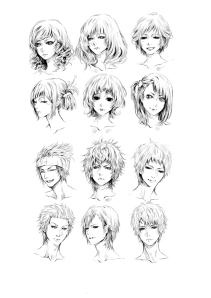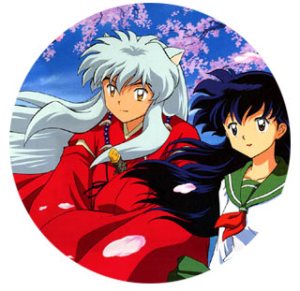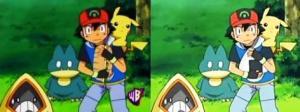Lynee Hart
Mr. Cox
ENG 104
11/28/2011
Anime IS Art!
“Oh, you draw anime…” said my teacher with a less than enthusiastic tone. I wanted to ask her, what does that mean, but I held it in. This was a reaction I would receive many times in different art classes and, every time, would question their response. Why do so many people, in and out of the drawing community, view anime as if it is not a respectable art form? Was it because of the association with children’s cartoons? Could their misconceptions of the porn industry in anime, if this what guides their preconceptions? They may have not made these assumptions if they had seen all the improvements of anime, the different types, the popularity of it here in America and how many artist are anime artists today. Or maybe, it is because they do not even understand what it is and where it came from.
Anime can be described as “the Japanese abbreviated pronunciation of ‘animation’”, while in English-speaking countries, it refers to Japanese animated cartoons (wikipedia.org). These Japanese cartoons had their beginnings in the 1917, but “many original Japanese cartoons were produced in the ensuing decades, the characteristic anime style developed in the 1960s—notably with the work of Osamu Tezuka—and became known outside Japan in the 1980s”(Wikipedia.Org). So as anime began to climb in Japan it slowly began to get noticed in America but the programs America was given at first was children’s anime.
Most Americans, and many other countries, know of Pokémon. Pokémon was on of the biggest cartoon shows to come out of Japan. Along with shows like Robotech and Star Blazers, some of the first shows to come to America, created an idea that Japanese cartoons was only for kids. This being ironic since Movies from Disney was considered innovations in comparison. Maybe another reason people viewed them as just kiddy television was because of the unusual stories.
To most the Japanese culture and themes may seem very odd or weird, especially since they “don’t always appear in the most obvious form” (Anime Explosion!, prefix 10. In anime the culture and themes are infused into it, even in “children’s” animes. Stories of magical people, lands, talking animals, magic and so on are things mostly in kid movies. This is also ironic consider a majority of anime is adult orientated. If a viewer from America sees a man bow to another man or a character call another by a prefix it might seem odd since we don’t to that. So out of that confusion they may just give up on anime and just brush it aside. But this is not how all people react many people love anime for this reason. The differences in culture are what fascinates them. In fact the” various fan subcultures do is provide a space for community [and] they allow people of diverse background and experience to form bonds around a common interest” (The World of Anime Fandom in America, 1).There is another part of anime, specifically how the character look and act, that draw others attentions.
In Japanese cartoons the characters can very form artist to arts but most follow the usual big expressive eyes, unique hair, clothes, deep character development and facial expressions. The face changes are drastic and often funny. Many call these facial changes a” ‘face fault’, in which they display an extremely exaggerated expression” (Wikipedia.org). So the characters “may exhibit a “vein” or “stress mark” effect, where lines representing bulging veins will appear on their forehead” (Wikipedia.org). This may be another reasons adult may not like it, because of its “cartoonish” nature, but it is one of the reasons I love it. Over the years more and more people have come to love it as well.
One study found that “60 percent of all T.V. cartoons worldwide are anime” (Anime from Akira to Howls Moving Castle). An African company will “soon launch a 24-hour anime channel…” thus showing the popularity in other parts of the world (Anime from Akira to Howls Moving Castle). Every year there can be multiple conventions for anime which grow in size each year as well. The first organized convention took place in “North America in 1977, which created a fan club to help promote anime” (Watching Anime, 22). As more and more people took interest in Japanese animation, it seemed the more that came over seas.
With in increase of anime came the increase in genres aw well. More people began to watch more drama, action romance and sci-fi instead of just programs for young adults. Japanese animation has even more of a break down between age, gender, and sub-genres. For young girls there is shojo and for boys, shonen (from Akira to Howls Moving Castle).The increase in popularity as led to cultures mixing ideas as well as the mix of media.
In America one of the genres used in books, movies and other forms of entertainment is cyber punk. Cyber-punk can be descried as “is a postmodern and science fiction genre noted for its focus on “high tech and low life” (Wikipedia.org). Cyberpunk plots often center on a conflict
among hackers, artificial intelligences, and mega corporations, and tend to be set in a near-future Earth, rather than the far-future settings or galactic vistas found in novels such as Isaac
Asimov’s Foundation or Frank Herbert’s Dune.The settings are usually post
industrial dystopias but tend to be marked by extraordinary cultural ferment and the use of technology in ways never anticipated by its creators (“the street finds its own uses for things”).Much of the genre’s atmosphere echoes film noir, and written works in the genre often use techniques from detective fiction (Burning Chrome, 1981). Japan took notice of this genre and has successfully made many cyberpunk animes. The “[re]discovery of Japan [in American cyberpunk] changed the Japanese view of Japanese culture… [in that] America cyberpunk enable Japan to find itself in the future of the West” (Kumiko Sato). This binding of the culture genres helped American and Japanese audiences alike to come together.
Another collaboration brought together by anime was that of anime-styled video games. Although they may be more popular in Japan, as of now, they are making a popularity rise here in America and other countries. This is because almost “every popular manga and anime have been adapted into video games in Japan, with increasing numbers of them being imported into Europe and North America” (Video Games and Their Relationship with Other Media,4). Though video games are a popular anime venue there are still forms of anime that many find distasteful.
Porn has always been an awkward and rather touchy subject, some want it banned from the entire internet while others argue such a thing is an attack on their rights. Anime is also subject to such controversial arguments. As stated before anime has many different subjects and some of it sex. For Americans “one of the most shocking features of anime is this frequent depiction of sexual imagery and graphic violence” (Cartoons from Another Planet, 159). An ironic fact of all of this is America is the country in high demand of anime porn, or Hentai as it is called in Japan. I will agree with the vulgarity of the pornography in anime (being the unwilling victim of it), but I also feel there is another side to this argument. What many may not consider is how anime is a medium used by anime artist, “1) as a realm of fantasy in which pent up repression can be released in an exciting and justifiable arena, and 2) for a direct confrontation of those very issues that plague human society and consciousness” (Cartoons from Another Planet,159). In fact here have been studies finding that “in the United States there has been a consistent decline in rape over the last 2 decades, and in those countries that allowed for the possession [porn]…”( Porn, Good for Us?). Many people can see past these misunderstood preconceptions and find a real love for anime, like anime artist.
Over the history of Japanese animation that has been a rise of anime artist who aspire to create their characters, manga and T.V. shows. Some American fans have grown up making career out of it. This is more possible today thanks to technology. The amateur manga movement is remarkable in that it has been organized almost entirely by and for teenagers and twenty-something’s. Amateur manga is not sent to publishers to be edited and distributed. It is, instead, printed at the expense of the young artists themselves and distributed within manga clubs, at manga conventions and through small adverts placed in specialist information magazines serving the amateur manga world. Through the 1980s it grew to gigantic proportions without apparently attracting the notice of academia, the mass media, the police, the PTA, or government agencies such as the Youth Policy Unit (Seishonen Taisaku Honbu), – which were established precisely to monitor the recurring tendency of youth to take fantastical departures from the ideals of Japanese culture(Kinsella 1).
In conclusion anime is an art form that should be respect for all that it adds to our cultures and societies. Japanese animation brings us together through cultural sharing, mixed media, thoughts and shared ideals. Japanese animation also teaches us to look past our preconceptions. Anime most importantly is able to invoke emotions that we all can feel, no matter what age, religion, culture or race, like all art should.
Works Cited
“Anime.” Wikipedia, the Free Encyclopedia. Web. 29 Nov. 2011. <http://en.wikipedia.org/wiki/Anime>.
“Cyberpunk.” Wikipedia, the Free Encyclopedia. Web. 29 Nov. 2011. <http://en.wikipedia.org/wiki/Cyberpunk>.
Diamond, Milton. “Porn:good for Us?” The Scientists. Web. <http://classic.the-scientist.com/article/display/57169/>.
Drazen, Patrick. Anime Explosion!: the What? Why? & Wow! of Japanese Animation. Berkeley, CA: Stone Bridge, 2003. Print.
“History of Anime.” Wikipedia, the Free Encyclopedia. Web. 29 Nov. 2011. <http://en.wikipedia.org/wiki/History_of_anime>.
Napie, Susan. “The World of Anime Fandom in America.” The World of Anime Fandom in America 1 (2006): 47-63. Print.
Napier, Susan Jolliffe. Anime from Akira to Howl’s Moving Castle: Experiencing Contemporary Japanese Animation. New York: Palgrave Macmillan, 2005. Print.
Patten, Fred. Watching Anime, Reading Manga: 25 Years of Essays and Reviews. Berkeley, CA: Stone Bridge, 2004. Print.
Picar, Martin. “Video Games and Their Relationship with Other Media.” Video Games and Their Relationship with Other Media. Print.
Price, Shinobu. “Cartoons from Another Planet: Japanese Animation as Cross-Cultural Communication.” The Journal of American Culture 24.1-2 (2001): 153-69. Print.
“Stylistic Crossings: Cyberpunk Impulses in Anime”” Stylistic Crossings: Cyberpunk Impulses in Anime” Print.
Sulliva, Jeremy. “Anime: The Cultural Signification of the Otak.” Anime: The Cultural Signification of the Otak (2005). Print.








 ced with suckers; some Japanese food is switched with American food, mature content may be edited out and “[a]lcoholics were now translated as drinking water instead of sake…” even if the bottle is labeled sake in Japanese characters (Price, 161). Word choices in the dialog are also changed when translated into English, thus furthering the original focus. Many anime artists, including Miyazaki; feel such changes are incredibly rude and unorthodox. Miyazaki even made a point of it by making a contract with Disney stating that, unless overviewed, they could not produce his movies. He did not want the Disney animators changing his vision.
ced with suckers; some Japanese food is switched with American food, mature content may be edited out and “[a]lcoholics were now translated as drinking water instead of sake…” even if the bottle is labeled sake in Japanese characters (Price, 161). Word choices in the dialog are also changed when translated into English, thus furthering the original focus. Many anime artists, including Miyazaki; feel such changes are incredibly rude and unorthodox. Miyazaki even made a point of it by making a contract with Disney stating that, unless overviewed, they could not produce his movies. He did not want the Disney animators changing his vision.